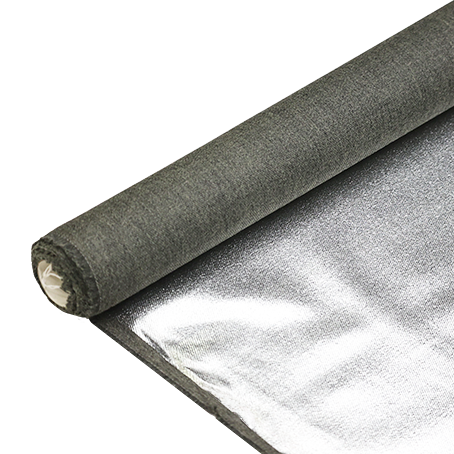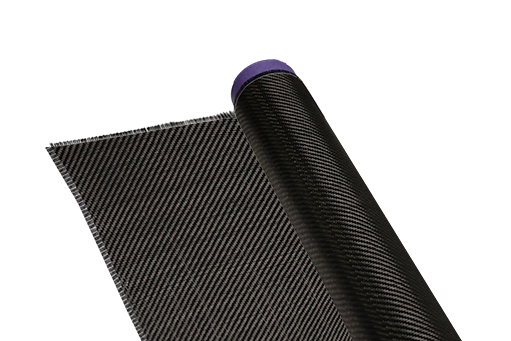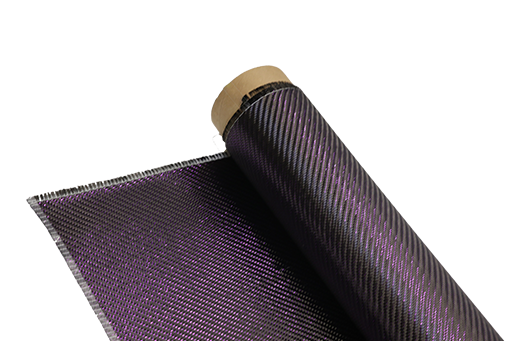Exploring New Material 2025: Future of Innovation
-
 Your Composites Expert Carbon Fiber Materials&Products
Your Composites Expert Carbon Fiber Materials&Products -
-1.png?width=686&height=617) Your Composites Expert Aramid Fiber Materials&Products
Your Composites Expert Aramid Fiber Materials&Products -
 Your Composites Expert UHMWPE Materials&Products
Your Composites Expert UHMWPE Materials&Products -
 Your Composites Expert Fiberglass Materials&Products
Your Composites Expert Fiberglass Materials&Products -
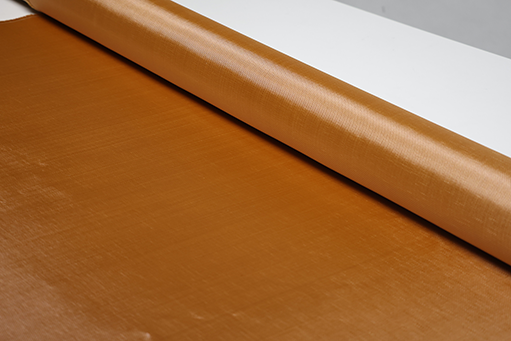 Your Composites ExpertPBO Materials&Products
Your Composites ExpertPBO Materials&Products -
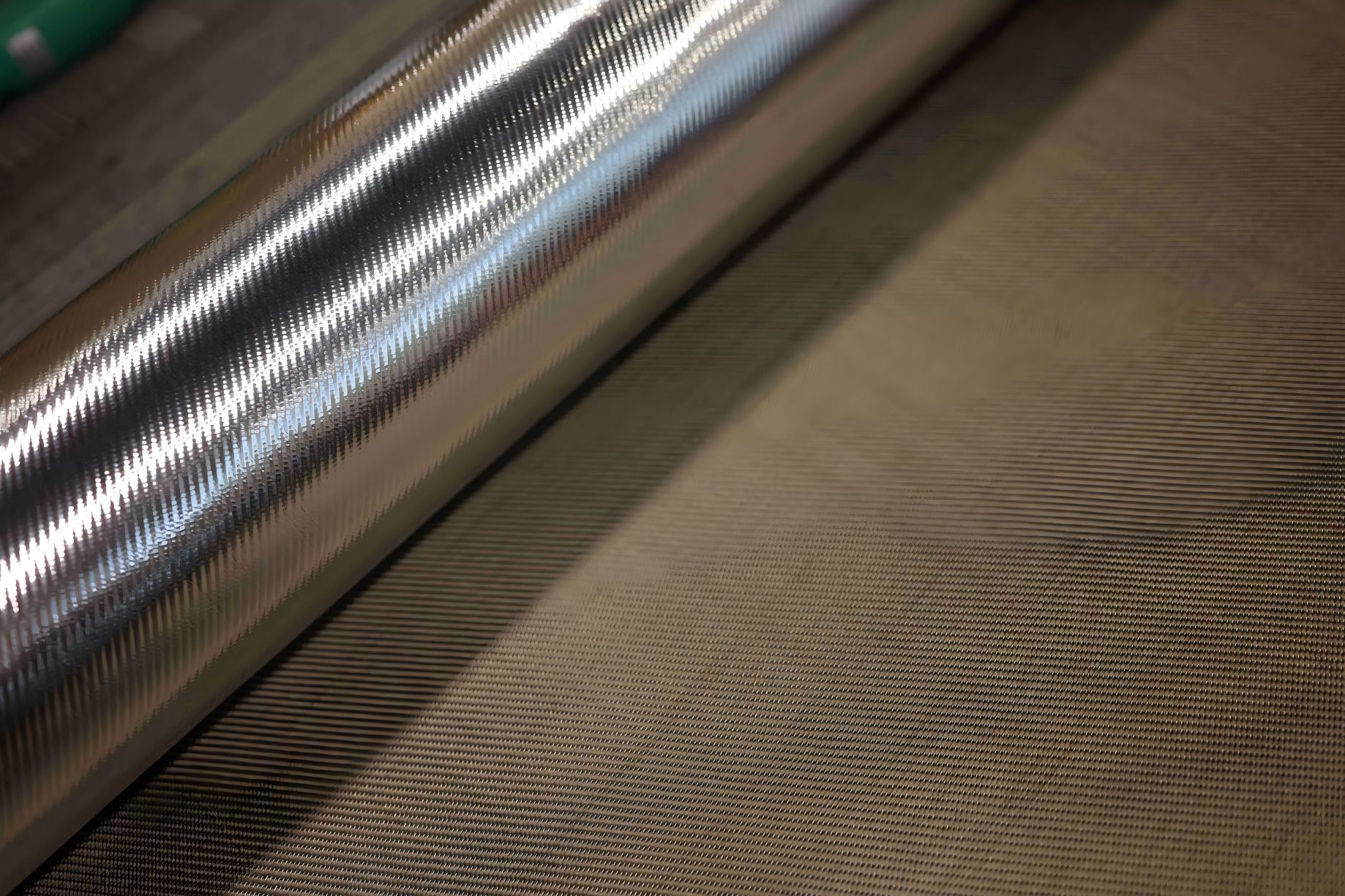 Your Composites Expert Basalt Materials&Products
Your Composites Expert Basalt Materials&Products
As we gaze into the technological and innovative future, the notion of New Material 2025 stands as a crucial catalyst in shaping future technological landscapes. These materials transcend mere novelty, embodying a transformative paradigm poised to revolutionize industrial applications across diverse sectors. By leveraging the potential of these new materials, industries are poised to witness a paradigm shift, marked by enhanced performance, sustainability, and operational efficiency. Industry reports, deemed credible, predict a significant growth trajectory for these innovative solutions, underscoring their pivotal role as we navigate into 2025 and beyond. This discourse aims to delve into the transformative impact of New Material 2025 on the technological, industrial, and personal spheres.

Key Takeaways
- New Material 2025 is key to technological innovation.
- The evolution of materials will impact various industrial applications.
- Anticipated growth in the market for new materials.
- Future technologies will rely on advanced materials for sustainability.
- New materials offer enhanced efficiency and performance across sectors.
- Collaboration among industries is essential for successful material innovation.
The Importance of New Materials in Technological Advancements
The discipline of materials science is undergoing a transformative evolution, profoundly influencing technological progress across diverse sectors. The advent of new materials, distinguished by superior performance, reduced weight, enhanced durability, and multifunctionality, underscores their critical role in propelling innovation and augmenting efficiency across multiple industries.
Defining New Materials
New materials comprise a vast spectrum of substances, engineered through cutting-edge methodologies. Their distinctive attributes frequently surpass those of conventional materials, rendering them indispensable in a myriad of applications. The continuous refinement in the comprehension and manipulation of these materials heralds significant breakthroughs across various domains, underscoring their pivotal contribution to technological advancement.
Impact on Various Industries
The influence of new materials is far-reaching, permeating sectors such as electronics, aerospace, and construction. For example, the introduction of lightweight composites is transforming aerospace engineering by significantly enhancing fuel efficiency and performance. In the realm of electronics, materials that augment conductivity are pivotal in the development of smaller, swifter, and more efficacious devices. The construction industry, meanwhile, benefits from materials that promise superior strength and longevity, thereby reducing maintenance expenditures over the long term.
| Industry | Example of New Material | Benefit |
|---|---|---|
| Aerospace | Carbon Fiber Composites | Improved fuel efficiency |
| Electronics | Graphene | Higher conductivity |
| Construction | Self-healing Concrete | Increased durability |
Understanding New Material 2025
The evolution of materials science is characterized by the advent of innovative substances, which redefine possibilities across various industries. New Material 2025 represents a collection of advanced composites, nanomaterials, and biomaterials, designed to transcend the limitations of traditional materials. To comprehend these materials, one must recognize their unique properties and transformative potential.
Defining New Material 2025
New Material 2025 signifies the next evolutionary step in materials development, driven by cutting-edge research and technology. These materials are distinguished by enhanced performance, durability, and sustainability. For example, advanced composites combine materials to create lighter yet stronger constructions, ideal for aerospace and automotive sectors. Nanomaterials, another component of New Material 2025, exploit nanoscale structures to achieve remarkable properties, such as increased strength and conductivity.https://www.youtube.com/embed/jlTg0hN-OS0
Key Characteristics of New Material 2025
The attributes of New Material 2025 delineate their efficacy across multiple sectors. Notable features include:
- Enhanced Durability: These materials exhibit greater resistance to wear and degradation.
- Lightweight Design: Advanced composites significantly reduce weight while maintaining strength, benefiting industries like automotive and aerospace.
- Environmental Sustainability: Many future materials are designed with eco-friendliness in mind, minimizing the impact on the environment.
- Versatility: Applications span various fields, including electronics, healthcare, and construction, showcasing the adaptability of new material technology.
Continued research and development in these areas enable the exploration of the extensive capabilities and future avenues for New Material 2025. Recent studies highlight the growing significance of these innovations in shaping the future landscape of materials science.
| Characteristics | Advanced Composites | Nanomaterials | Biomaterials |
|---|---|---|---|
| Strength | High | Very High | Moderate |
| Weight | Lightweight | Varies | Varies |
| Sustainability | Mixed | High | High |
| Applications | Aerospace, Automotive | Electronics, Medicine | Healthcare, Packaging |
Innovations Driving New Material Development
Innovations in material science are revolutionizing the industrial landscape by enhancing the properties and functionalities of new materials. The current focus in R&D in new materials is on sustainable solutions and optimizing existing material performance. This evolution has catalyzed an increase in collaborations between academia and commercial enterprises.
Research and Development Trends
Research and development initiatives have become crucial for driving innovation. A variety of emerging technologies is being explored, including:
- Nanotechnology - Focusing on materials at the atomic and molecular level to create more effective products.
- Biomaterials - Enabling the design of materials that closely mimic biological systems for healthcare applications.
- Smart materials - Capable of responding to environmental changes, enhancing functionality in various applications.
These advancements stem from significant investment in R&D in new materials, leading to breakthroughs that challenge traditional methodologies and applications.
Collaboration Between Industries and Academia
Industry-academia collaboration is pivotal in accelerating the development of innovative materials. Joint ventures facilitate the exchange of knowledge, resources, and expertise, driving impactful results. Many universities partner with tech companies to convert theoretical research into practical applications.
The following table summarizes some successful collaborations:
| Collaboration Partner | Focus Area | Outcome |
|---|---|---|
| Massachusetts Institute of Technology (MIT) | Advanced Composites | Increased strength-to-weight ratios in aerospace materials |
| Stanford University | Smart Coatings | Development of self-cleaning surfaces for various industries |
| University of California, Berkeley | Biodegradable Plastics | Innovative materials for reducing plastic waste |
These examples underscore the importance of such partnerships in achieving rapid advancements and pushing the boundaries of innovations in material science.
Applications of New Materials in 2025
The advent of new materials is pivotal in reshaping diverse sectors, notably within the electronics industry, automotive sector, and healthcare solutions. Through the integration of cutting-edge materials, these industries are witnessing a paradigm shift, marked by enhanced functionality, efficiency, and sustainability. This transformation heralds a future characterized by progressive advancements.
In the Electronics Industry
In the realm of electronics, the significance of new materials cannot be overstated. They are instrumental in the creation of devices that are not only lightweight and durable but also operate with unparalleled efficiency. The incorporation of advanced polymers and nanomaterials has led to significant improvements in conductivity and flexibility. This innovation is being harnessed by industry giants such as Apple and Samsung, enabling them to craft smartphones that are both thinner and more powerful.
In the Automotive Sector
The automotive sector is undergoing a profound transformation, driven by the adoption of new materials aimed at reducing vehicle weight and enhancing energy efficiency. The use of materials like carbon fiber and high-strength steel is pivotal in achieving this goal, resulting in vehicles that consume less fuel. At the forefront of this revolution are companies like Tesla and Ford, which are pioneering the use of these materials in electric vehicles. Their efforts are focused on maximizing range and performance, setting new benchmarks in the industry.
In Healthcare Solutions
The healthcare sector has witnessed a significant leap forward, thanks to the integration of new materials. These advancements have led to safer implants and surgical instruments, as well as the development of wearable health monitoring devices. Brands such as Medtronic and Siemens are at the forefront of this transformation, leveraging these innovations to create more effective solutions for patient health management.

| Industry | Key Applications | Innovative Companies |
|---|---|---|
| Electronics | Flexible displays, lightweight components | Apple, Samsung |
| Automotive | Lightweight structures, energy-efficient materials | Tesla, Ford |
| Healthcare | Biocompatible devices, smart wearables | Medtronic, Siemens |
Sustainability and Environmental Considerations
The imperative for sustainability in materials has escalated in contemporary society. Innovations that emphasize eco-friendliness are imperative to mitigate environmental degradation while fostering the advancement of novel materials. Enterprises across diverse sectors are delving into eco-friendly innovations, striving to embed sustainable practices into their operations.
Eco-friendly Material Innovations
Emerging innovative materials focus on curtailing waste and energy consumption. Illustrative examples include biodegradable plastics derived from renewable sources, recycled metals, and plant-based composites. These innovations address the imperative for material production responsibility, contributing to a more environmentally conscious planet.
Lifecycle Assessment of New Materials
The lifecycle assessment of new materials is paramount in gauging their environmental footprint. This evaluation encompasses the materials' journey from extraction to production, use, and eventual disposal. By quantifying their ecological impact, businesses can make strategic decisions regarding the materials that best align with their sustainability objectives.
| Material Type | Production Process | End-of-Life Options | Environmental Impact |
|---|---|---|---|
| Biodegradable Plastics | Derived from renewable resources | Composts in natural conditions | Reduces plastic pollution |
| Recycled Metals | Processed from existing metal waste | Recycled back into production | Conserves natural resources |
| Plant-based Composites | Manufactured using agricultural byproducts | Biodegradable; can be composted | Lower carbon footprint |
Challenges in Implementing New Material 2025
The advent of New Material 2025 is met with a plethora of obstacles, which threaten to impede its advancement. Overcoming technical barriers and economic hurdles is paramount for its successful integration across various sectors. Grasping the nature of these impediments is a crucial step towards their resolution.
Technical Barriers
Innovative materials frequently encounter formidable technical hurdles during their developmental stages. These obstacles encompass:
- Manufacturing complexities: The creation of new production methodologies and processes is fraught with intricacies, necessitating the deployment of specialized equipment and the acquisition of advanced expertise.
- Material performance hurdles: The task of ensuring that these novel materials fulfill requisite performance benchmarks is fraught with risks, potentially leading to delays in their integration.
- Scalability issues: The transition from small-scale production to large-scale manufacturing poses significant challenges, requiring meticulous planning and execution.
Cost and Economic Factors
Economic considerations play a pivotal role in the adoption of new materials. Companies must weigh several factors:
- Initial investment: The high costs associated with research, development, and production can act as a deterrent for potential adopters.
- Cost-effective integration: The incorporation of new materials into existing systems often demands additional investments in infrastructure.
- Market competition: Companies must assess how these new materials position them relative to competitors who may not be embracing these innovations.

Future Trends for New Materials Beyond 2025
The realm of material science is undergoing a transformative phase, unveiling a plethora of opportunities for innovation post-2025. The rapid pace of advancements is being influenced by a multitude of factors, setting the stage for the emergence of novel materials that will significantly impact our lives. Insights from industry luminaries and research entities offer invaluable forecasts, shedding light on the materials that will likely dominate our future.
Predictions for Material Science Evolution
Several pivotal shifts are anticipated within the domain of material science evolution:
- Biodegradable materials: The growing imperative for sustainability will catalyze the creation of more biodegradable alternatives to traditional plastics.
- Smart materials: The ascendancy of materials capable of responding to environmental stimuli is expected, ushering in unprecedented functionalities in the realms of electronics and construction.
- Nanotechnology: Breakthroughs in nano-materials will significantly elevate performance across a spectrum of industries, from healthcare to energy generation.
- Recyclable composites: Advancements in recycling technologies will facilitate the widespread adoption of recyclable composites, fostering a more circular economy.
Aligning with the prognostications for new materials, stakeholders across a broad spectrum of industries, from consumer goods to aerospace, are poised to embrace these innovations. Regulatory shifts will act as a catalyst for innovation, compelling manufacturers to prioritize eco-friendly solutions. Grasping these future trends in materials is imperative for enterprises seeking to excel in a rapidly evolving marketplace.
| Trend | Description | Implication |
|---|---|---|
| Biodegradable Materials | Development of materials that can naturally decompose. | Reduces landfill waste and minimizes environmental impact. |
| Smart Materials | Materials designed to change properties in response to stimuli. | Enhances functionality for a wide range of products. |
| Nanotechnology | Manipulation of materials at the molecular or atomic scale. | Improves performance and creates high-tech applications. |
| Recyclable Composites | Composite materials designed for easy recycling. | Promotes sustainability and resource efficiency. |
As we delve into the future trends in materials, these predictions highlight the indispensable role of innovation in material science evolution. By forecasting these developments, enterprises can strategically align themselves to fulfill the evolving demands of a rapidly shifting market.
Case Studies of Successful New Material Implementations
In the realm of innovation, understanding how new materials have been successfully implemented provides valuable insights. This section explores notable company innovations and their applications of new materials across various sectors. Learning from these case studies in new materials demonstrates both the practicality and effectiveness that drive performance improvements in different industries.
Leading Companies and Their Innovations
Several companies are at the forefront of utilizing new materials, showcasing successful implementations that redefine industry standards. Here are some prominent examples:
- Hexcel Corp: Specializes in advanced composite materials, enhancing aerospace manufacturing by reducing weight while maintaining structural integrity.
- Covestro: Innovates in the field of polyurethane and polycarbonate materials, improving sustainability in automotive applications through lighter and more efficient components.
- 3M: Implements nanotechnology in the production of high-performance films, enhancing energy efficiency in electronic displays.
- BASF: Develops biodegradable materials that focus on reducing environmental impact without compromising performance, addressing sustainability in packaging solutions.
| Company | Material Type | Industry | Innovation Highlights |
|---|---|---|---|
| Hexcel Corp | Advanced Composites | Aerospace | Weight reduction, increased safety |
| Covestro | Polyurethane | Automotive | Sustainability, efficiency |
| 3M | Nano Films | Electronics | Energy-efficient displays |
| BASF | Biodegradable Materials | Packaging | Environmental impact reduction |
These successful implementations highlight the transformative power of new materials in enhancing operational efficiency and environmental stewardship. The case studies in new materials present compelling evidence that innovation leads to improved performance and sustainability across industries.
Global Market Potential for New Material 2025
The advent of 2025 heralds a transformative era for the realm of new materials. This sector, increasingly captivating investors and industry stalwarts, is set to witness a paradigm shift. The burgeoning interest in these innovations across various sectors underscores their intrinsic value, thereby catalyzing optimistic growth forecasts and a plethora of investment avenues.
Market Growth Projections
Experts predict a substantial escalation in the global market for new materials over the forthcoming years. Studies indicate that the market's expansion could reach a compound annual growth rate (CAGR) surpassing 14% by 2025. This projected growth is underpinned by the imperative for cutting-edge solutions in sectors such as electronics, healthcare, and construction.
- Electronics: The integration of lightweight materials has transformed product design and functionality.
- Healthcare: Biocompatible materials are poised to elevate surgical procedures and patient outcomes.
- Construction: The adoption of sustainable materials is becoming indispensable for compliance with environmental regulations.
Investment Opportunities
The burgeoning market potential for new materials presents a plethora of investment opportunities. Venture capitalists and corporations are increasingly inclined to support ventures focused on developing novel material solutions. Key sectors ripe for investment include:
- Biodegradable composites aimed at mitigating environmental impact.
- Smart materials capable of responding to external stimuli.
- Recyclable materials that align with sustainability objectives.
Investors seeking to capitalize on this burgeoning trend will encounter a myriad of options. Engaging with startups in the material science domain can yield substantial returns, given the escalating global demand for new materials.
Conclusion
Reflecting on the trajectory of new materials, it becomes evident that New Material 2025 transcends mere technological progress, embodying a paradigm shift across diverse sectors. The discourse on these innovations highlights their potential to propel advancements in electronics, automotive, and healthcare, thereby enhancing efficiency and performance. This is particularly crucial in addressing the imperative for sustainability.
The future of material science hinges on sustained research and intersectoral collaboration, essential for realizing the full potential of these breakthroughs. Overcoming existing hurdles and venturing into uncharted territories will empower businesses and researchers to capitalize on these materials. This will, in turn, sculpt a more environmentally conscious and technologically advanced world.
The significance of keeping abreast of material science advancements cannot be overstated. As these innovations progress, they will redefine manufacturing and design paradigms. Moreover, they will catalyze the exploration of novel avenues for a sustainable future, fostering a proactive ethos across all industries.
FAQ
What are new materials and why are they important?
New materials encompass cutting-edge substances engineered for superior attributes and functionalities, thereby enhancing performance across diverse sectors. Their pivotal role lies in catalyzing technological progress, augmenting efficiency, and fostering sustainability in fields such as electronics, aerospace, and construction.
How does New Material 2025 differ from traditional materials?
New Material 2025 encompasses advanced composites, nanomaterials, and biomaterials, boasting enhanced performance, reduced weight, and increased durability over traditional counterparts. These advancements often translate to superior functionalities and diminished environmental impact.
What trends are currently shaping the development of new materials?
The evolution of new materials is presently driven by intensive research and development, coupled with robust collaborations between academia and industry. This synergy catalyzes breakthroughs and expedites the practical deployment of advanced materials.
What applications can we expect to see for new materials in 2025?
By 2025, new materials are anticipated to permeate various sectors, notably electronics for enhanced functionality, the automotive industry for improved efficiency and safety, and healthcare for pioneering solutions enhancing patient outcomes and waste reduction.
How does sustainability play a role in the development of new materials?
Sustainability is a paramount consideration in the creation of new materials, with a focus on minimizing environmental impact. The adoption of eco-friendly alternatives and lifecycle assessments is becoming more prevalent, aiming to mitigate ecological footprints from production to disposal, thereby promoting sustainable consumption.
What challenges do manufacturers face when implementing new materials?
Manufacturers encounter several hurdles when integrating new materials, including technical complexities such as manufacturing challenges and material performance issues. Economic factors, including production costs, integration into existing systems, and market acceptance, also pose significant barriers to widespread adoption.
What are the future trends expected in material science beyond 2025?
Beyond 2025, material science is anticipated to witness continued technological advancements, a shift towards eco-friendly and sustainable options, and regulatory shifts. Expert predictions suggest that adaptive materials and smart technologies will be pivotal in future developments.
Can you provide examples of successful new material implementations?
Indeed, numerous leading entities have successfully integrated new materials into their offerings. These examples highlight innovations leading to enhanced operational efficiency, superior product quality, and diminished environmental impact, underscoring the transformative potential of these advanced materials.
What is the global market potential for New Material 2025?
The global market potential for New Material 2025 is considerable, with forecasts indicating robust growth rates and investment opportunities. Emerging markets are particularly attractive, as companies and researchers delve into the financial viability of material science innovations.




